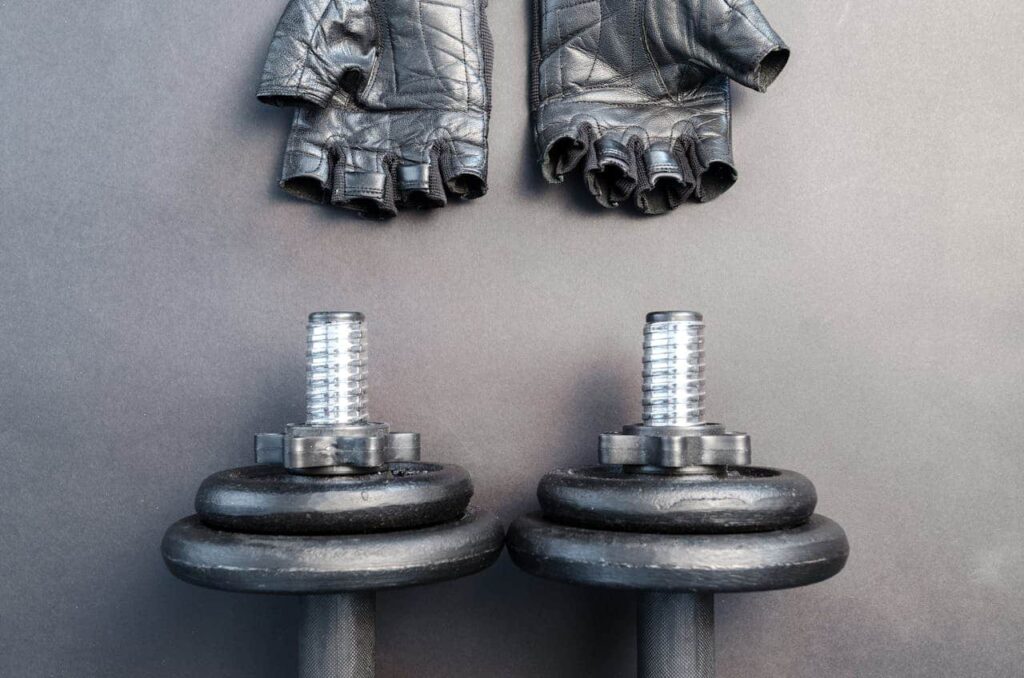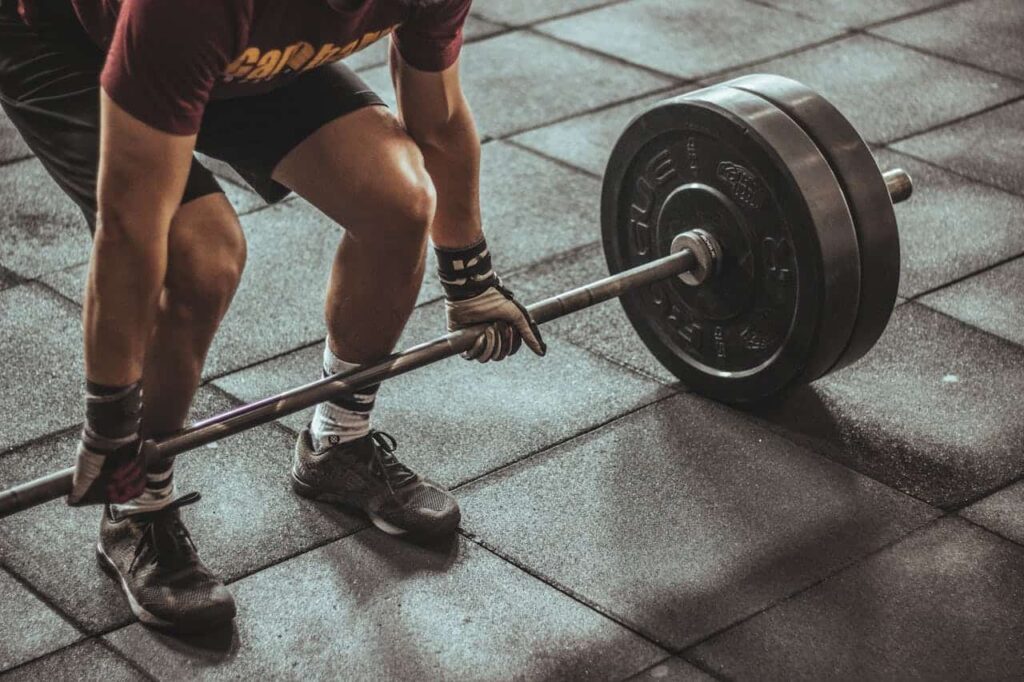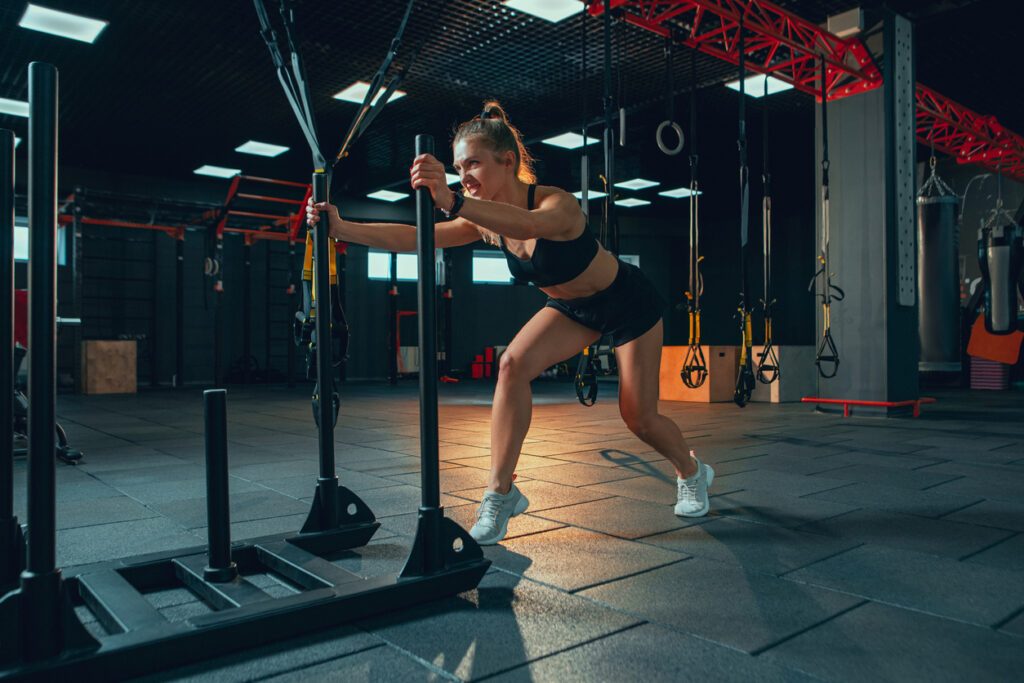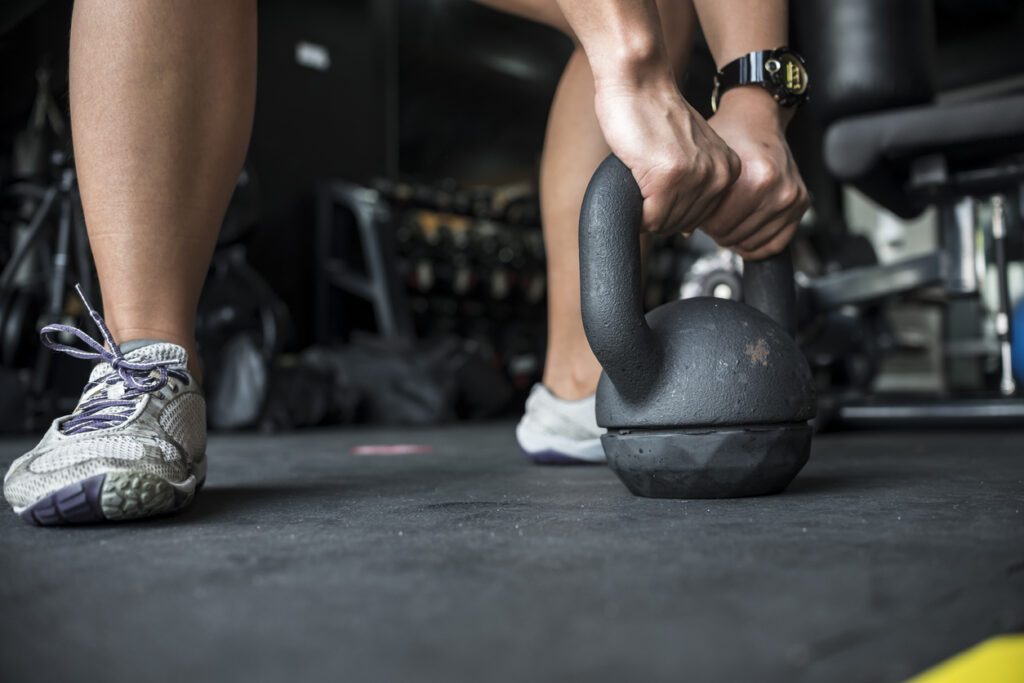
Summary
Welcome / Welcome / Tips for getting started / Bodybuilding with or without gloves: which is the best choice?
Bodybuilding with or without gloves: which is the best choice?
Musculation avec ou sans gants ? Cet article vous dévoile tout ce que vous devez savoir sur l’impact des gants sur vos performances et votre confort.
Introduction
Discover the advantages and disadvantages of weight training with or without gloves, as well as recommended exercises. We will also give you advice on choosing the right gloves for your needs.
La musculation est une discipline exigeante qui demande non seulement de la force et de la détermination, mais aussi une attention particulière aux détails, notamment en ce qui concerne l’équipement utilisé. Parmi les accessoires souvent négligés mais essentiels, les gants de musculation occupent une place importante. En effet, le choix de porter ou non des gants peut avoir un impact significatif sur votre performance et votre confort lors de vos séances d’entraînement.
Wearing weight training gloves has many benefits: they protect your hands, prevent blisters and calluses, and provide better grip, especially when lifting heavy weights. They absorb perspiration, which helps maintain a firm and hygienic grip on equipment. Additionally, some gloves provide additional support to the wrists, which is ideal for exercises involving wrist movements.
Cependant, l’utilisation de gants de musculation n’est pas sans inconvénients. Ils peuvent entraîner une perte de sensibilité et diminuer le contact direct avec les barres et haltères, ce qui peut affecter la qualité de votre prise. Il existe également un risque de mauvaise prise et de blessures si les gants ne sont pas bien ajustés. Enfin, ils peuvent restreindre certains mouvements et nécessitent un entretien régulier pour éviter les odeurs désagréables et les coûts supplémentaires liés à leur remplacement.
Ainsi, la question de savoir s’il faut porter des gants lors de la musculation mérite une réflexion approfondie. Cet article explore en détail les avantages et inconvénients des gants de musculation, ainsi que des recommandations d’exercices avec et sans gants, pour vous aider à faire un choix éclairé.
Benefits of weight training gloves
Hand protection
L’un des principaux avantages des gants de musculation est la protection qu’ils offrent à vos mains. Une séance avec des poids peut causer des dommages à la peau, notamment des ampoules et des callosités. Les gants créent une barrière entre votre peau et l’équipement, réduisant ainsi les frottements et protégeant vos mains contre ces désagréments.
Prevention of blisters and calluses
Les ampoules et callosités sont des blessures courantes chez les amateurs de musculation. Elles peuvent rendre les séances d’entraînement inconfortables et nuire à votre performance. En portant des gants, vous minimisez le risque de développer ces affections, ce qui vous permet de vous concentrer pleinement sur vos exercices sans douleur ni distraction.
Better grip for lifting heavy weights
Lors de la musculation, une bonne prise en main a son importance, surtout lorsque vous soulevez des poids lourds. Les gants de musculation sont souvent dotés de surfaces antidérapantes qui améliorent votre prise sur les barres et haltères. Cela vous permet de soulever des charges plus lourdes en toute sécurité, sans craindre que l’équipement ne glisse de vos mains.
Sweat absorption
Transpirer pendant l’exercice est inévitable, mais cela peut rendre les équipements glissants et difficiles à manipuler. Les gants de musculation absorbent la transpiration, ce qui contribue à maintenir une prise ferme et sécurisée. De plus, cela empêche la sueur de se transférer sur les barres et haltères, améliorant ainsi l’hygiène de vos séances d’entraînement.
Maintien d’une bonne prise même en cas de transpiration excessive
Even if you sweat excessively, weight training gloves help you maintain a solid grip. The gloves' absorbent, non-slip material prevents your hands from slipping, which is especially helpful during exercises that require significant grip strength, like deadlifts or pull-ups.
Increased hygiene by avoiding leaving perspiration on the equipment
By avoiding leaving perspiration on the equipment, weight training gloves contribute to better hygiene in the gym. This is particularly important in shared environments, where multiple people use the same equipment. Gloves reduce the transmission of bacteria and keep equipment cleaner.
Wrist support
Some weight training gloves offer additional support for the wrists. This support is ideal for exercises that put a lot of strain on this joint, such as bench presses or bicep curls. Wrist support helps prevent injuries and improves stability during movement.
Ideal for exercises involving wrist movements
For exercises that involve intense wrist movements, such as tricep extensions or curls, weight training gloves provide crucial support. They reduce strain on the wrists and allow for more secure and comfortable execution of movements.
Disadvantages of weight training gloves
Loss of sensitivity
L’un des principaux inconvénients des gants de musculation est la perte de sensibilité. Lorsque vous portez des gants, le contact direct entre vos mains et les barres ou haltères est réduit. Cela peut nuire à la perception tactile, rendant difficile l’ajustement précis de votre prise et l’ajustement des mouvements en fonction du poids.
Reduced direct contact with bars and dumbbells
La diminution du contact direct avec les équipements peut également affecter votre technique. La sensation des barres et haltères est essentielle pour certains exercices, et les gants peuvent interférer avec ce retour sensoriel. Cela peut entraîner des erreurs dans l’exécution des mouvements, potentiellement réduisant l’efficacité de votre entraînement.
Risk of incorrect grip and injury
Weight training gloves can sometimes cause poor grip if the size or material is not suitable. Improper grip increases the risk of injury, including sprains or muscle strains. It is crucial to choose well-fitting gloves to avoid these problems and ensure a secure and stable grip.
Restriction of movements
Certaines personnes trouvent que les gants restreignent leurs mouvements, en particulier lors d’exercices nécessitant une grande amplitude. Par exemple, lors des exercices de musculation impliquant des rotations ou des flexions, les gants peuvent limiter la flexibilité des poignets et des doigts, affectant ainsi la fluidité et l’efficacité des mouvements.
Peut affecter la performance lors d’exercices nécessitant une prise ferme
Pour des exercices nécessitant une prise ferme, comme les pull-ups ou les muscle-ups, les gants peuvent parfois être plus un obstacle qu’une aide. La perte de contact direct avec la barre peut diminuer la force de préhension et la stabilité, ce qui peut rendre ces exercices plus difficiles à réaliser efficacement.
Additional maintenance
Need to wash gloves regularly to avoid unpleasant odors
Les gants de musculation absorbent une grande quantité de sueur pendant les séances d’entraînement. Si vous ne les lavez pas régulièrement, ils peuvent rapidement développer des odeurs désagréables. Pour éviter cela, il est essentiel de laver vos gants après chaque utilisation ou au moins une fois par semaine. Utilisez un détergent doux et laissez-les sécher à l’air libre pour préserver leur matériau et prolonger leur durée de vie.
Additional cost to replace worn gloves
Les gants de musculation s’usent avec le temps, surtout si vous vous entraînez fréquemment. Les coutures peuvent se défaire, le matériau peut s’user, et l’adhérence peut diminuer. Cela signifie que vous devrez investir dans de nouveaux gants régulièrement. Le coût de remplacement des gants usés peut s’accumuler, surtout si vous optez pour des modèles de haute qualité. Il est donc important de considérer ce coût supplémentaire dans votre budget d’équipement de musculation.
Recommended exercises with gloves
Deadlift
Le soulevé de terre est un exercice de base en musculation qui sollicite de nombreux groupes musculaires, y compris les jambes, le dos et les bras. Porter des gants lors de cet exercice est particulièrement bénéfique pour améliorer l’adhérence sur la barre, surtout avec des charges lourdes. Les gants réduisent également la friction sur les mains, prévenant les ampoules et callosités, ce qui vous permet de maintenir une prise ferme tout au long du mouvement.
Bench press
For some exercises with equipment comme le développé couché est un autre exercice fondamental qui cible principalement les pectoraux, les triceps et les épaules. Lors de cet exercice, les gants de musculation offrent une meilleure adhérence, ce qui est crucial pour la sécurité et l’efficacité de la levée. Ils aident à absorber la transpiration, garantissant que vos mains ne glissent pas pendant que vous poussez la barre. De plus, certains gants fournissent un soutien supplémentaire pour les poignets, réduisant ainsi le risque de blessures.
Pull-ups
Les tractions sont excellentes pour développer la force du dos et des bras. Cet exercice nécessite une prise ferme et stable sur la barre de traction. Les gants de musculation améliorent l’adhérence et réduisent la friction, ce qui permet de maintenir une prise solide, même en cas de transpiration excessive. Ils protègent également vos mains des ampoules et des déchirures, vous permettant de vous concentrer sur la performance plutôt que sur l’inconfort.
Recommended exercises without gloves
Wrist movements (biceps curl, triceps extensions)
Les exercices ciblant les poignets, tels que les curls biceps et les extensions triceps, bénéficient grandement de l’absence de gants. Sans gants, vous avez un contact direct avec la barre ou les haltères, ce qui améliore la sensibilité et la précision de votre prise. Cela permet de mieux contrôler les mouvements et de solliciter plus efficacement les muscles ciblés. De plus, l’absence de gants permet une plus grande amplitude de mouvement au niveau des poignets, ce qui est crucial pour exécuter correctement ces exercices.
Exercises requiring a firm grip (pull-ups, muscle-ups)
Pull-ups and muscle-ups are advanced exercises that require a firm, stable grip. Without gloves, you can maximize friction between your hands and the bar, which improves stability and grip strength. This is especially important for explosive movements like muscle-ups, where a strong grip is essential to avoid slipping and injury. Additionally, not wearing gloves can help strengthen the skin and muscles in your hands, increasing their resistance and strength over time.
Tips for choosing the right gloves
Proper size for good grip
La taille des gants de musculation est cruciale pour assurer une bonne adhérence et un confort optimal. Des gants trop serrés peuvent restreindre la circulation sanguine et limiter les mouvements, tandis que des gants trop lâches peuvent glisser et diminuer la prise. Pour choisir la bonne taille, mesurez la circonférence de votre main et consultez le guide des tailles du fabricant. Essayez toujours les gants avant de les acheter, si possible, pour vous assurer qu’ils s’ajustent parfaitement à vos mains.
Breathable and non-slip materials
Le choix des matériaux est également essentiel pour des gants de musculation efficaces. Optez pour des matériaux respirants comme le néoprène ou le cuir perforé, qui permettent à l’air de circuler et réduisent la transpiration. Les paumes des gants devraient être dotées de surfaces antidérapantes, comme des inserts en silicone ou des revêtements en caoutchouc, pour améliorer l’adhérence et prévenir les glissades. Ces matériaux aident à maintenir une prise ferme, même pendant les séances d’entraînement les plus intenses.
Additional support for the wrists if needed
For certain exercises involving heavy lifting or intense wrist movements, additional support for the wrists may be beneficial. Some weight training gloves come with integrated wrist straps, providing added stabilization and support. These straps help prevent sprains and strains, keeping wrists in a secure position. If you have weak wrists or regularly perform exercises like the bench press or deadlift, consider gloves with this type of support.
Conclusion
Les gants de musculation offrent de nombreux avantages, tels que la protection des mains et une meilleure adhérence. Cependant, ils ont aussi des inconvénients, comme la perte de sensibilité et la nécessité d’un entretien régulier. Le choix de porter des gants dépend de vos préférences et de vos besoins spécifiques.
For heavy exercises like deadlifts and pull-ups, gloves can improve performance. On the other hand, for movements requiring a firm grip, it is preferable to avoid them. Choosing the right gloves requires considering the size, material and support needed for the wrists.
Build muscle with DRIP
Push your limits and strengthen your body with DRIP! Participate in intense 50-minute sessions.
At DRIP, dive into the action with 7 dynamic workshops in 3 series, where every second is a challenge. Our energetic trainers will motivate you with memorable playlists. Suitable for all levels, DRIP is the ideal place to work your thighs effectively. You will love to hate us! ❤️🔥
Share
Tagged
Read also
follow us
on instagram
To follow all our news,
take advantage of our tutorials and participate
in our many competitions.
BREAKING NEWS!
Receive our newsletter.






